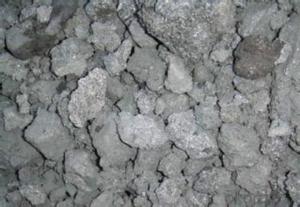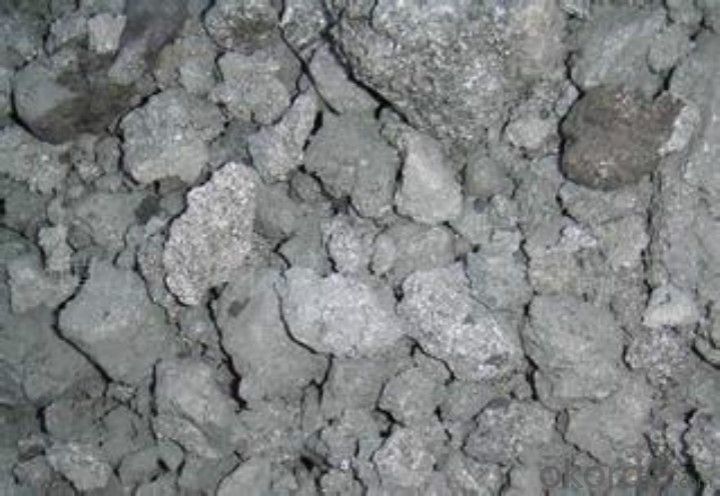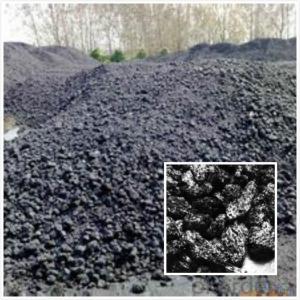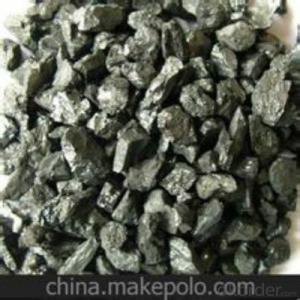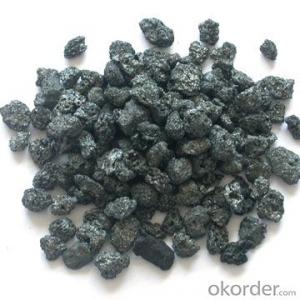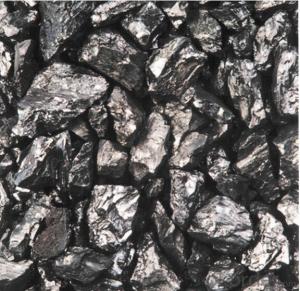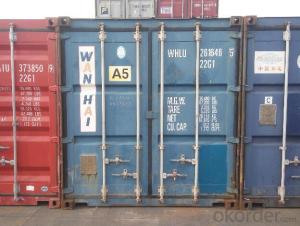Calcined Petroleum Coke as Carbon Raiser
- Loading Port:
- Tianjin
- Payment Terms:
- TT OR LC
- Min Order Qty:
- 19.1
- Supply Capability:
- 1000 m.t./month
OKorder Service Pledge
OKorder Financial Service
You Might Also Like
Intrduction
Carbon additive to ningxia production of anthracite as raw material, after washing, crushing, high temperature calcination, filter, etc. Craft refined and become.This is after the anthracite calcination generated high carbon content and low volatile component of the new product, is an ideal raw material to make steel.
Calcined Petroleum Coke comes from delayed coke which extracted from oil refinery. Although Calcined Petroleum Coke contains a little bit higher level of sulfur and nitrogen than pitch coke, the price advantage still makes it widely used during steel-making and founding as a kind of carbon additive/carburant.
Features
In the smelting process for reducing agent. Performance: replace the traditional oil carbon additive, decrease the cost of steelmaking. Features: low ash. low sulfur,low phosphorus, high calorific value. High ratio resistance,high mechanical strength,high chemistry activity. It is mainly used for metallurgy reductant inoculants, casting, refractory materials, machinery, electronics and other fields.
1) high absorption rate, it can be absorbed up to 90%.
2) absorbed more quickly than other carbon additive; no residue remains in furnace.
3) low Sulfur, the lowest can reach below 0.20%; low nitrogen, normally below 200ppm (0.02%)
Specifications
CPC | |||
F.C.% | 98.5MIN | 98.5MIN | 98MIN |
ASH % | 0.8MAX | 0.8MAX | 1MAX |
V.M.% | 0.7 MAX | 0.7 MAX | 1 MAX |
SULFUR % | 0. 5MAX | 0. 7MAX | 1MAX |
MOISTURE % | 0.5MAX | 0.5MAX | 1MAX |
Pictures
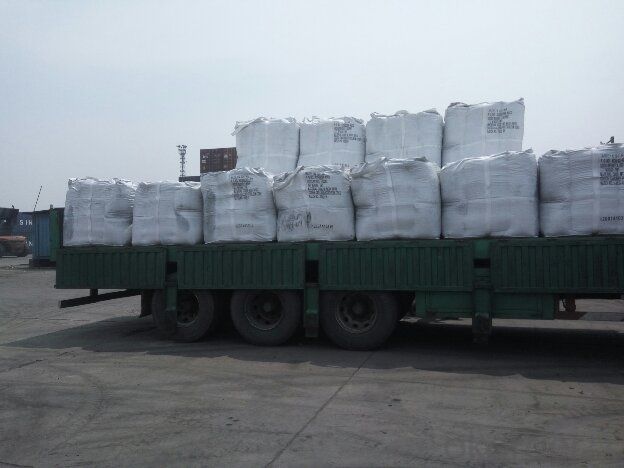
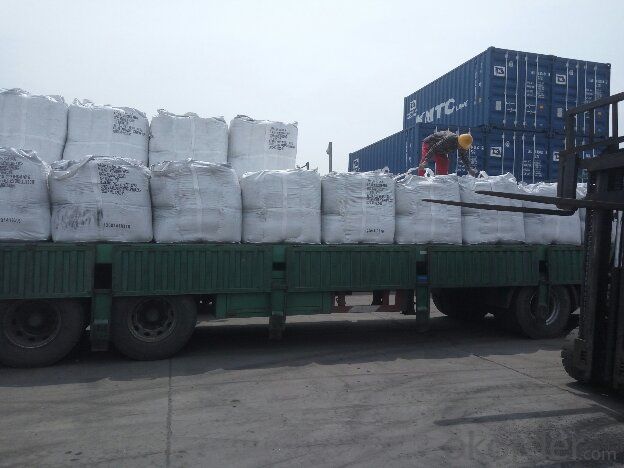
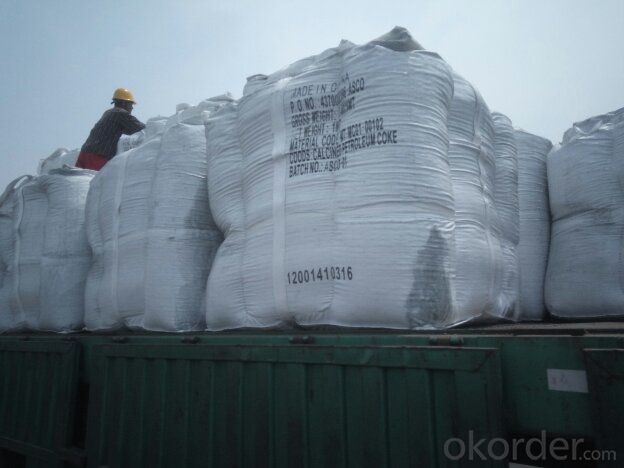
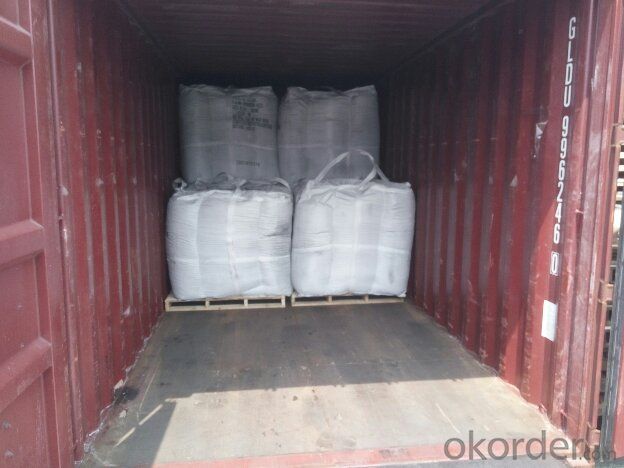
FAQ:
(1)CPC could be as fuel
Petroleum coke is a material relatively low in cost and high in heat value and carbon content with good chemical stability, making it an efficient and costeffective fuel for producing metal, brick and related products.
(2)CPC could be as Graphite Electrodes
Graphite can be produced from lowsulfur needle petroleum coke, which must be heated above 5,432 degrees Fahrenheit.
(3)CPC could be as Anodes
Calcined petroleum coke, often low in sulfur and metallic impurities, is used to make anodes for
the smelting industry.Calcined petroleum coke is mixed with coal tar pitch in the production of
anodes.
- Q: Well, recently, the carbon cycle has suddenly come up with a lot of questions. What's the definition of carbon and light carbon? What are the characteristics, and what are the differences between the two?
- Light and heavy soil organic matter is divided according to the proportion of the isolates used in this study. The proportion of 1.7 is the proportion of < 1.7 for light fraction organic matter, the proportion of > 1.7 recombinant organic matter. The composition and decomposition of organic carbon in different components are significantly different. Light fraction organic matter by no solution complete plant residues and its fractions include a small amount of live microorganisms or their secretions, is susceptible to microbial decomposition and utilization characteristics, is very sensitive to climatic and environmental changes and agricultural management measures, is the active carbon pool in soil.
- Q: Often see a lot of cars made of carbon fiber body, is this material flammable?
- No, it's not flammable. You can't burn it.Pre oxidized excess oxygen filaments cannot be burned.
- Q: What is the carbon content of different types of household waste?
- The carbon content of different types of household waste can vary depending on the specific materials being discarded. Generally, organic waste such as food scraps, yard waste, and paper products tend to have a higher carbon content compared to inorganic waste like glass, plastics, and metals. Food waste is primarily composed of organic materials and has a high carbon content. It typically ranges from 50 to 70 percent carbon content. This is because food is derived from plants and animals, which contain carbohydrates, proteins, and fats that are rich in carbon. Yard waste, such as grass clippings, leaves, and branches, also has a substantial carbon content. It contains plant matter that is predominantly made up of cellulose and lignin, which are carbon-based compounds. The carbon content of yard waste can vary depending on the type of vegetation, but it generally falls within the range of 40 to 60 percent. Paper products, such as newspapers, cardboard, and office paper, are primarily made from wood pulp. Wood is composed of cellulose, hemicellulose, and lignin, all of which contain carbon. As a result, paper waste has a significant carbon content, typically ranging from 40 to 60 percent. On the other hand, inorganic waste materials like glass, plastics, and metals have minimal carbon content. These materials are primarily derived from non-renewable resources such as minerals and fossil fuels, which are low in carbon content. Therefore, their carbon content is negligible or close to zero. It is important to note that while organic waste contains higher carbon content, it also has the potential to be composted or converted into biogas through anaerobic digestion, thereby contributing to carbon sequestration or renewable energy generation. In contrast, inorganic waste materials like plastics and metals are non-biodegradable and can have detrimental environmental impacts if not properly managed.
- Q: What is methane?
- Methane is a colorless and odorless gas that is the primary component of natural gas. It is formed from the decay of organic matter and is a potent greenhouse gas.
- Q: Advantages of carbon fiber
- Carbon fiber has excellent properties of elemental carbon, such as small proportion, excellent heat resistance, small thermal expansion coefficient, high thermal conductivity, good corrosion resistance and good conductivity. At the same time, it has a kind of fiber like flexibility, which can be woven and wrapped. The best performance of carbon fiber is that the specific strength and specific modulus are more than that of general reinforcement fiber.
- Q: What is carbon nanocomposite?
- A carbon nanocomposite is a material that combines carbon nanotubes or graphene with a matrix material like polymers or metals to form a composite material. Usually, small amounts of carbon nanotubes or graphene, often in the form of nanoparticles, are added to improve the mechanical, electrical, and thermal properties of the composite material. Carbon nanotubes are cylindrical structures made of carbon atoms arranged in a hexagonal lattice, while graphene is a single layer of carbon atoms arranged in a two-dimensional lattice. These carbon-based materials have exceptional properties, such as high strength, electrical conductivity, and thermal conductivity. When incorporated into a composite material, these properties can be transferred to the overall structure, resulting in improved performance. Various industries and applications have explored the use of carbon nanocomposites. For instance, in aerospace, researchers have investigated these materials for their lightweight and high-strength properties, which could potentially enhance the fuel efficiency and durability of aircraft components. In electronics, carbon nanocomposites show promise for developing high-performance sensors, conductive films, and energy storage devices. Moreover, they have been studied for potential applications in medical devices, automotive parts, and energy storage systems. In summary, carbon nanocomposites offer the opportunity to create materials with enhanced properties by leveraging the unique characteristics of carbon nanotubes or graphene. However, challenges in production and scalability still exist, and further research is needed to optimize their performance and cost-effectiveness for various applications.
- Q: What are the consequences of increased carbon emissions on human migration patterns?
- Human migration patterns are significantly affected by the increase in carbon emissions. One of the most notable outcomes is the worsening of climate change, resulting in more frequent and severe natural disasters like hurricanes, floods, and droughts. These extreme weather events can cause immense damage to communities, infrastructure, and livelihoods, compelling people to move in search of safer and more stable environments. The rise in sea levels, which is another consequence of carbon emissions, poses a substantial threat to coastal regions and island nations. As sea levels continue to climb, low-lying areas become increasingly vulnerable to flooding and coastal erosion, rendering them uninhabitable. This displacement of populations, commonly known as climate refugees, can lead to large-scale migrations, placing additional strain on resources and infrastructure in the receiving areas. Furthermore, carbon emissions contribute to shifts in temperature and precipitation patterns, which can have a profound impact on agricultural activities. Changes in growing seasons, more frequent droughts or floods, and the proliferation of pests and diseases can all negatively affect crop yields and food security. This disruption in the availability of food and resources can compel vulnerable populations to migrate in search of better livelihoods and food sources. The consequences of increased carbon emissions on human migration patterns also extend to health issues. Climate change can facilitate the spread of diseases like malaria and dengue fever, as well as exacerbate air pollution, worsening respiratory problems. These health risks can necessitate the relocation of individuals and communities to areas with better healthcare infrastructure and conditions. To sum up, the increase in carbon emissions has far-reaching effects on human migration patterns. The exacerbation of climate change, rising sea levels, disruptions to agriculture, and health risks all contribute to the displacement of populations, creating a need for individuals and communities to seek safer and more stable environments. It is crucial to address carbon emissions and mitigate climate change in order to minimize the adverse impacts on human migration and ensure a sustainable future.
- Q: How does carbon dioxide affect waste management processes?
- Carbon dioxide (CO2) has a significant impact on waste management processes. One of the main ways in which it affects waste management is through the decomposition of organic waste. When organic waste, such as food scraps or yard waste, is sent to landfills, it undergoes anaerobic decomposition due to the lack of oxygen. This process produces methane (CH4), a potent greenhouse gas that contributes to climate change. Methane is approximately 25 times more effective at trapping heat in the atmosphere than carbon dioxide over a 100-year period. Therefore, the presence of carbon dioxide in waste management processes indirectly results in increased methane emissions, exacerbating the greenhouse effect. Moreover, carbon dioxide emissions from waste management activities can occur during the transportation and disposal of waste. The collection and transportation of waste to landfills or incineration facilities require the use of vehicles that typically run on fossil fuels, releasing carbon dioxide into the atmosphere. Additionally, waste incineration generates carbon dioxide emissions, as the combustion process produces CO2 as a byproduct. To mitigate the impact of carbon dioxide on waste management, several strategies can be employed. Firstly, reducing the amount of waste generated through waste reduction and recycling efforts can help minimize the need for landfilling or incineration, thereby reducing carbon dioxide emissions associated with waste management. Furthermore, implementing waste-to-energy technologies, such as anaerobic digestion or landfill gas capture, can help to harness the energy potential of organic waste, while simultaneously reducing methane emissions. Anaerobic digestion converts organic waste into biogas, which can be used to generate electricity or heat, while landfill gas capture systems collect methane emitted from landfills and use it for energy production. Lastly, transitioning to low-carbon transportation options, such as electric or hybrid vehicles, for waste collection and transportation can help reduce carbon dioxide emissions associated with waste management processes. In conclusion, carbon dioxide affects waste management processes by contributing to the production of methane during the decomposition of organic waste and through emissions generated during waste transportation and disposal. By implementing waste reduction strategies, waste-to-energy technologies, and transitioning to low-carbon transportation options, the impact of carbon dioxide on waste management can be minimized, resulting in more sustainable and environmentally friendly waste management practices.
- Q: I saw a cell phone in the magazine, the global release of 900, no camera, what function is F1 carbon fiber material, actually sold 40000 yuan a piece!.. Everyone said that the circulation is so small, worth so much money? Or carbon fiber material worth so much money?
- Carbon fiber material is very expensive, we are specializing in the production of carbon fiber bicycle accessories company, we know more about this industry.. Such an analogy, an aluminum alloy wheel, that is, the cost of more than 100 yuan, to replace the same carbon fiber material costs more than 1000 of the cost.. Carbon fiber belongs to high-end materials, and foreign countries is to control production, because many weapons and aircraft also use this material, the United States will build weapons in other countries, so are the strict control of each production state of carbon fiber materials..
- Q: How is carbon used in the production of carbon fiber?
- Carbon plays a vital role in the production of carbon fiber. Carbon fiber production involves subjecting a precursor material, typically a polymer like polyacrylonitrile (PAN) or rayon, to a series of heating and chemical treatments. Initially, the precursor material undergoes carbonization, a process where it is heated to a high temperature without oxygen. This carbonization stage includes pyrolysis, which breaks down the molecular structure and eliminates non-carbon elements such as hydrogen, oxygen, and nitrogen. Once carbonization is complete, the resulting material becomes a carbon-rich structure referred to as char. However, it is not yet considered carbon fiber. To convert the char into carbon fibers, further processing steps called stabilization and graphitization are necessary. During stabilization, the char is exposed to heat in the presence of oxygen, resulting in the formation of cross-linked structures. This step enhances the fiber's thermal stability and prevents shrinkage or deformation during subsequent processing. Following stabilization, the material is heated at a higher temperature in an inert atmosphere during graphitization. This process aligns the carbon atoms within the fiber, creating a highly ordered and crystalline structure. Throughout this entire process, carbon serves as the primary constituent of the resulting carbon fiber. Starting from the precursor material containing carbon atoms, the carbonization and graphitization steps remove impurities and rearrange the carbon atoms, producing a durable and lightweight fiber. The resulting carbon fiber possesses exceptional properties, including high strength-to-weight ratio, stiffness, and resistance to heat and chemicals. These attributes make it a valuable material in numerous industries, such as aerospace, automotive, and sporting goods.
Send your message to us
Calcined Petroleum Coke as Carbon Raiser
- Loading Port:
- Tianjin
- Payment Terms:
- TT OR LC
- Min Order Qty:
- 19.1
- Supply Capability:
- 1000 m.t./month
OKorder Service Pledge
OKorder Financial Service
Similar products
Hot products
Hot Searches
Related keywords
